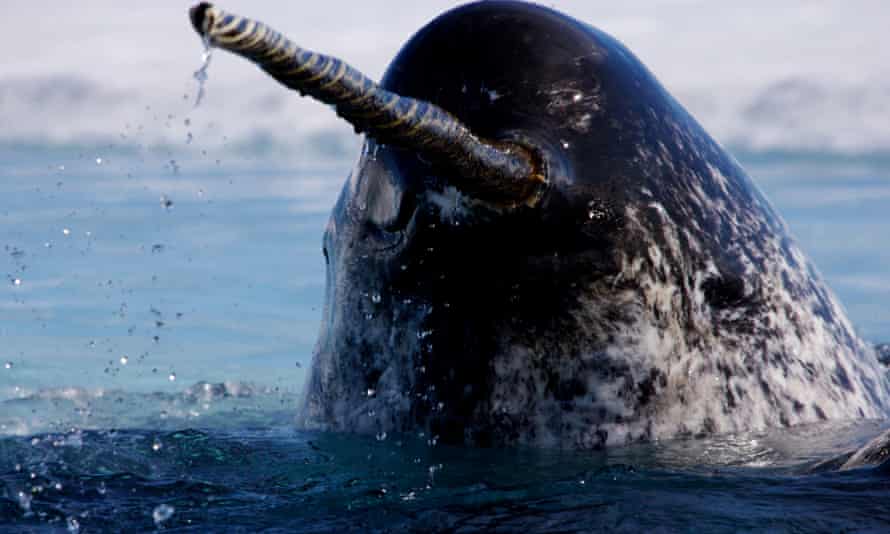There are some animals about which it is easy to forget the fact that they have teeth, so that every time they flash their grins, it is as though you are seeing a new animal. Dogs, cats of all kinds, sharks and crocodiles are not among these. Horses, rabbits, fish and geese live toothless in my mind.
Narwhals are among the actually toothless, if you discount their tusks. Inside their mouths, which are shaped in a permanently sweet smile, there are no teeth as we understand teeth to be.
But the males have a long, unicorn-like projection protruding – just off centre – from what might be described as their upper lip. I find them quite festive, like ornaments that should be hung on a Christmas tree. Maybe it’s their wintry, icicle-like tusk. I try to forget that this tusk is a tooth.
In Moby-Dick, Ishmael describes the narwhal as having: “A very picturesque, leopard-like look, being of a milk-white ground colour, dotted with round and oblong spots of black.” He describes the “peculiar horn”, because it is not in the middle, as “giving its owner something analogous to the aspect of a clumsy left-handed man.”
Nobody knows for sure what the beautiful tusk is for.
“It is striking when you think that this animal decided to take all of its tooth-producing energy and put it into one thing [a tusk] that sticks out nine feet into the ocean,” Martin Nweeia, a Harvard dentist told the Smithsonian, where he is a member of the Department of Vertebrate Zoology. “With the amount of energy that it takes to produce that one tusk it could easily have 30 to 40 teeth in its mouth doing other things.”
“Tooth-producing energy”; the idea of teeth “doing other things”. It is all quite a lot to chew on.

In 2014, Nweeia developed a new theory: the tooth is sensitive, a bit like our teeth when we drink ice water. But because of its spiral shape, it seems to be designed to expose the narwhal tusk to the water, rather than protect them. Nweeia believes that the tusks can sense the salinity of water, which helps them to tell whether icebergs are melting, diluting the sea, or forming, which makes it more salty. This tells them whether they need to leave in order to avoid being trapped in the ice.
The Inuit name for narwhals translates as “the one that is good at curving itself to the sky”, because narwhals often point their tusks up and out of the water (the word “narwhal” comes from the old Norse nar, which means corpse, because they sometimes lie very still, the verb for which is “logging”).
When they are not pointing their faces to the sky or lazing about, they dive to depths of more than a kilometre.
In Moby-Dick, Herman Melville also wrote that the Danish king’s throne was made from narwhal tusks, which is true. The throne chair, as it is called, is guarded by three life-sized silver lions weighing 130kg each.
In England, at William the Conqueror’s castle in Warwick, there is a narwhal tusk that is said to be the rib of the Dun Cow, the most British mythical beast that ever existed: it is a very large cow that roams the heath and once belonged to a giant.
“The whole thing that is great about the teeth of the narwhal is that nothing makes sense,” said Nweeia in 2012. But vikings believed narwhal tusks, whatever their purpose for the narwhals, could cure melancholia. Thinking of these porpoises with their tails and tusks pointed cheerfully at the sky, how could you not agree?
“The Nature of …” is a column by Helen Sullivan dedicated to interesting animals, insects, plants and natural phenomena. Is there an intriguing creature or particularly lively plant you think would delight our readers? Let us know on Twitter @helenrsullivan or via email: helen.sullivan@theguardian.com